|
|
 |
|
January 25, 2012
For me, sparkling wine is not just for celebration, and not just for warm weather pleasure. I was recently reminded of how much I enjoy bubbles, and how versatile they really can be, when I opened up a bottle of sparkling pink Moscato from Italy’s Puglia province (M/Mochetto, Rosato, $17, imported by Quintessential). I sipped a glassful of the lightly effervescent fizz as I puttered around the kitchen making salmon patties for dinner, and then I decided what-the-heck--I’m enjoying this so much I might as well put that bottle of Chardonnay back in the fridge and pour the Moscato with supper instead. Rosato, $17, imported by Quintessential). I sipped a glassful of the lightly effervescent fizz as I puttered around the kitchen making salmon patties for dinner, and then I decided what-the-heck--I’m enjoying this so much I might as well put that bottle of Chardonnay back in the fridge and pour the Moscato with supper instead.
The wine is distinctly sweet, with Moscato’s characteristic floral aromas, but its little slap of acidity at the end of each sip revitalizes the taste buds and keeps the wine from slipping into the doldrums. The fact that it is low in alcohol (5%) placed the wine in perfect balance with the relatively simple salmon cakes. In fact, this charming little pink wine was so delectable that it got me musing about the variety of sparkling wines that Italy produces.
A couple of regions make their spumante using the traditional sparkling wine method (a second fermentation in the bottle, riddling, disgorgement), but most rely on the slightly less expensive Charmat method, which tends to produce a wine with lower alcohol and delicate mousse. But regardless of how they are made, I can’t--off the top of my head--think of any other country that creates as many different styles of sparkling wine as Italy.
Many wine fanciers consider the sparkling wines from Franciacorta, in the Lombardy region, among the country’s most elegant. The best ones are stylish and sophisticated. They are made by the traditional method, and the grapes include Chardonnay, Pinot Noir and Pinot Bianco. Franciacorta wines are typically brut.
The province of Trento likewise produces spumante made by traditional method, from Chardonnay, Pinot Noir, Pinot Meunier and Pinot Bianco. The region’s high altitude and cool northern climate contribute to the attractive crispness, balance and complexity found in the top Trento brands.
Prosecco is the name of both the grape and the type of wine from the Veneto; it is generally crisp, refreshing and relatively low in alcohol. Whether brut, slightly sweet or dessert-style, global sales have soared now that wine drinkers have discovered these appealing, and generally inexpensive, sparkling wines.
Lambrusco, which some people think of only as a sweet, sappy sipper, should not be sneered at. The best Lambrusco seccos are dry, frothy dark red wines that can charm and refresh both on their own and as an accompaniment to many rich, meat or cheese-based dishes (I recently relished one with a prosciutto and arugula pizza). They can range from softly sparkling (frizzante) to full sparkling (spumante). Native to Emilia, they are made from any number of different strains of the labrusca grape. They are best enjoyed in a red-wine glass rather than a flute.
From the Piedmont region comes Braccheto, a light bodied, dark pink frizzante, slightly sweet, delicately perfumed and reminiscent of strawberries (I like it so much I served it years ago at my own wedding). The grape is Brachetto, the DOCG Brachetto d’Aqui.
Moscato d’Asti is made from the Moscato Bianco grape, and tends to be on the sweet side, low in alcohol, delicately frothy and thoroughly enjoyable. It’s an informal wine that requires neither a flute nor a special occasion. Moscato d’Asti comes from the region of Asti located at the opposite end of the boot from the Puglian Moscato that originally set me off on this homage to Italy’s fizz.
Posted by Marguerite Thomas at 11:26 AM
|
|
January 23, 2012
I was in Sonoma County a couple of weeks ago as one of the judges in a wine competition. My four-person panel evaluated 50 Viogniers, and 59 Pinot Noirs, followed in short order over the next couple of days by (among other things) 65 Sauvignon Blancs, a multitude of Grenaches and a boatload of Rieslings. By the end of the week what do you suppose we wanted to drink with dinner? Silky Sonoma Chardonnay and high end California Cab? Absolutely not. After a steady diet of wine tasting, some of us were craving--tequila!
With this in mind, a handful of fellow judges and I took ourselves to Mateo’s Cocina Latina for dinner. Recently voted one of Healdsburg’s ten best new restaurants, this popular eatery is the gastronomic brainchild of Mateo Granados, spun off from his tamale truck and his acclaimed  mobile pop-up restaurant (a favorite at several local wineries). Tequila is very much a specialty at Mateo’s, which offers some 50 Blancos, Reposados and Anejos, as well as Reserve Tequilas and Mezcales. mobile pop-up restaurant (a favorite at several local wineries). Tequila is very much a specialty at Mateo’s, which offers some 50 Blancos, Reposados and Anejos, as well as Reserve Tequilas and Mezcales.
I can tell you from personal experience that Mateo’s Meyer Lemon Margarita is as refreshing as, say, a racy Sauvignon Blanc. It is just the thing to have with some of the restaurant’s delicious appetizers such as the Little Gem lettuce salad with citrus, pomegranate seeds and blue cheese dressing, or chili-infused steamed mussels. A heftier and more intense Paloma Hermosa (St. Germain elderflower liqueur, lime and grapefruit juices, smoky Del Maguey Vida Mezcal) had the right complexity and depth of flavor to be a rhapsodic accompaniment to Mateo’s Yucatecan inspired specialties such as rock cod tacos with Hopi blue corn and pumpkin seed-bell pepper sauce, or suckling pig marinated in annatto seed.
For wine lovers who don’t need a palate-cleansing break there is plenty of good wine to  choose from in bottle, barrel or on tap. Some of the more obscure offerings include Bjornstad Cellars Chardonnay, Cartograph Gewurztraminer, and Acorn Syrah. Among the many notable labels you’ll recognize are Paul Dolan, Groom, Quivera, Nalle. And there are many beers in barrel or bottle, or on tap. But whichever beverage suits your mood for it will be terrific with the meal, for Mateo Granados devotes a lot of attention to selecting food-friendly libations: “Every drink here goes with my food,” he told me. “The wines, the tequilas, and of course the beers--I’ve chosen everything here on the basis of how well it goes with food.” choose from in bottle, barrel or on tap. Some of the more obscure offerings include Bjornstad Cellars Chardonnay, Cartograph Gewurztraminer, and Acorn Syrah. Among the many notable labels you’ll recognize are Paul Dolan, Groom, Quivera, Nalle. And there are many beers in barrel or bottle, or on tap. But whichever beverage suits your mood for it will be terrific with the meal, for Mateo Granados devotes a lot of attention to selecting food-friendly libations: “Every drink here goes with my food,” he told me. “The wines, the tequilas, and of course the beers--I’ve chosen everything here on the basis of how well it goes with food.”
Mateo’s Cocina Latina
214 Healdsburg Avenue, Healdsburg
707 433-1520
Posted by Marguerite Thomas at 9:03 AM
|
|
January 17, 2012
2012 Wine of the Year
Gloria Ferrer 2000 Carneros Cuvee, Carneros ($50)
2012 Winery of the Year
V. Sattui, Napa Valley

Best of Show White
Milbrandt Vineyards 2010 Riesling, Traditions, Columbia Valley ($12.99)
Best of Show Red
Falkner Winery 2008 Syrah, Rock Creek Vineyard, Temecula Valley ($26.95)
Best of Show Dessert
Inniskillin 2008 Riesling Ice Wine VQA, Niagara Peninsula, Canada ($79.99)
Best of Show Sparkling
Gloria Ferrer 2000 Carneros Cuvee, Carneros ($50)
Best Barbera
Pianetta Winery 2009 Barbera, Paso Robles ($28)
Best Cabernet Franc
Barboursville Vineyards 2009 Cabernet Franc Reserve, Virginia ($23)
Best Cabernet Sauvignon
J. Lohr 2008 Cabernet Sauvignon, Hilltop Vineyard, Paso Robles ($35)
Best Chardonnay
Cakebread Cellars 2008 Chardonnay Reserve, Carneros ($54)
Best Malbec
Puro Uno 2008 Malbec Gran Reserva, Mendoza, Argentina ($100)
Best Merlot
Trefethen Vineyards 2008 Merlot, Oak Knoll District ($35)
Best Pinot Grigio
Estancia 2010 Pinot Grigio, California ($11.99)
Best Pinot Gris
Milbrandt Vineyards 2010 Pinot Gris, Traditions, Columbia Valley ($12.99)
Best Pinot Noir
Rapaura Springs 2009 Pinot Noir, Vineyard Reserve, Central Otago, NZ ($26.99)
Best Riesling
Milbrandt Vineyards 2010 Riesling, Traditions, Columbia Valley ($12.99)
Best Rhone Blend
South Coast Winery 2008 GSM, Temecula Valley ($14)
Best Rioja
Beronia 2004 Rioja DOC Gran Reserva, Spain ($27.99)
Best Sauvignon Blanc
First Fleet 2011 Sauvignon Blanc, Adelaide Hills, Australia ($6.99)
&
J. Lohr 2010 Sauvignon Blanc, Carol's Vineyard, Napa Valley ($25)
Best Syrah
Falkner Winery 2008 Syrah, Rock Creek Vineyard, Temecula Valley ($26.95)
Best Viognier
Barboursville Vineyards 2010 Viognier Reserve, Virginia ($23)
Best Zinfandel
Rock Wall Wine Co. 2009 Zinfandel, Stagecoach Vineyard, Napa Valley ($40)
&
V. Sattui Winery 2009 Zinfandel, Gilsson Vineyard, Russian River Valley ($37)
CLICK HERE FOR ALL 2012 MEDAL WINNERS
Posted by Robert Whitley at 12:30 PM
|
|
January 11, 2012
One of the remarkable stories in California wine over the past five years has been the steady rise of the Gloria Ferrer Champagne Caves, the sparkling wine house on the Sonoma side of Carneros that is owned by Spain’s giant Freixenet wine company.
What is most remarkable is the striking difference between the Gloria Ferrer bubblies of today compared with its earliest efforts, which were competent but bland. The Gloria Ferrer wines of today (including its underrated pinot noirs, chardonnays and merlots) have verve and complexity, striking qualities that have made them increasingly popular on the wine competition circuit.
 In recent years Gloria Ferrer has entered a number of different cuvees – Royal Cuvee, Carneros Cuvee, Blanc de Blancs, Va de Vi and Brut Rose – that have taken the top prize for sparkling wine at prestigious wine competitions. In recent years Gloria Ferrer has entered a number of different cuvees – Royal Cuvee, Carneros Cuvee, Blanc de Blancs, Va de Vi and Brut Rose – that have taken the top prize for sparkling wine at prestigious wine competitions.
The most recent triumph came in the first week of the new year, when it’s 2006 Blanc de Blancs ($28) was voted Best Sparkling wine at the 2012 San Francisco Chronicle Wine Competition.
Look for more of the same from Gloria Ferrer this year.
Over the next year you will no doubt hear a good deal from the growing and ever more vocal “Drink Local Wine Crowd” that seems to have its roots in Texas, where some of the local wines are actually pretty good.
I have no quarrel with the movement other than the underlying message that somehow it’s a betrayal of regional fidelity to enjoy a Cotes-du-Rhone from France or a juicy malbec from Argentina.
I wish the local vintners well, but if it’s not in the bottle, it’s not something I can support. Near where I live in San Diego there is one outstanding winery, Fallbrook, and about 30 others that range in quality from occasionally acceptable to barely mediocre.
I’m afraid I owe it to you, dear reader, not to steer you in the direction of bad wine. Try the local wines, yes. Embrace them only if they’re delivering the goods.
Expect wine prices to inch up this year as more people adjust to economic conditions and step out more often for the splurge wine purchase. I’m hearing that sales of wines priced at $20 to $40 – a category that was fairly dead a year ago – are on the move again, though we all know deals abound at every turn.
We’ll see how all of this pans out, but I’m kind of enjoying the boom in moderately priced wines, particularly in restaurants, where the sweet spot is holding steady at $30 to $50.
 The backlash against wines that emphasize power and heft over elegance will gain momentum. It got a boost when the San Francisco Chronicle wine editor, Jon Bonne, selected Cathy Corsion as the Chron’s 2011 Winemaker of the Year. The backlash against wines that emphasize power and heft over elegance will gain momentum. It got a boost when the San Francisco Chronicle wine editor, Jon Bonne, selected Cathy Corsion as the Chron’s 2011 Winemaker of the Year.
Corison is a Napa Valley icon because of her magnificent Cabernet Sauvignons down through the years at Chappellet and now Corison Winery on Highway 29 in the heart of the valley. Choosing her as the year’s top winemaker is a serious statement, for her Cabs have always been about finesse, complexity, balance and elegance.
Corison held to her notion of what makes great Cabernet and never delved into the realm of the high-alcohol fruit bombs that play so well with some of the more prominent wine magazines.
I’ve tasted verticals of Corison Cab going back more than 10 years and the wines have aged splendidly, which I attribute to their impeccable balance.
The Chronicle wine section is closely watched throughout the California wine industry. Bonne’s admiration for the Corison style will not go unnoticed.
Posted by Robert Whitley at 11:40 AM
|
|
January 5, 2012
Castello Banfi's Tour de ForceWine of the year is one thing, winery of the year is another.
To choose the former, I simply go with my gut. The "wow" factor is of utmost importance, and the winner should certainly exhibit profound characteristics that can be easily identified, even by a novice.
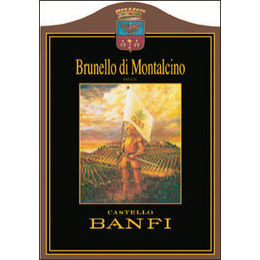 The latter is recognition for a body of work. While some of it certainly should contain an element of profundity, the most important factor is consistent excellence over an extended period of time and with multiple wines. I also factor cost into the equation, which I do not for Wine of the Year, which is simply the wine that most impressed me regardless of price. The latter is recognition for a body of work. While some of it certainly should contain an element of profundity, the most important factor is consistent excellence over an extended period of time and with multiple wines. I also factor cost into the equation, which I do not for Wine of the Year, which is simply the wine that most impressed me regardless of price.
Price most definitely played a critical role in this year's selection of Winery of the Year, for the "value" factor delivered by the Tuscan wines of Castello Banfi was nothing short of astounding throughout 2011. The measure of consistency can be found in the performance of these wines over a six-month stretch at three major international wine competitions under my supervision — the San Diego International, Critics Challenge and Sommelier Challenge.
At the San Diego International, Banfi walked off with 10 medals, then seven at Critics Challenge and eight at Sommelier Challenge. Other wineries may have won more medals, but Banfi did so with wines that ranged in price from moderately expensive to dirt cheap.
I would bore you with the details, except that the details are anything but boring for those who fancy fine wine at bargain bin prices.
.jpg) At the 28th annual San Diego International Wine Competition (SDIWC) in April, Banfi's 2008 Chianti Classico DOCG ($13) won a Platinum award, meaning it advanced to the championship round of voting for Best of Show red wine, where it fell short but in the meantime was named Best Chianti. Castello Banfi's 2006 Brunello di Montalcino (its flagship wine) won a Gold award, and eight other wines took Silver, including the 2008 Centine Rosso and 2009 Centine Bianco at $11 each. These are some of the tastiest wines in the world at this price! At the 28th annual San Diego International Wine Competition (SDIWC) in April, Banfi's 2008 Chianti Classico DOCG ($13) won a Platinum award, meaning it advanced to the championship round of voting for Best of Show red wine, where it fell short but in the meantime was named Best Chianti. Castello Banfi's 2006 Brunello di Montalcino (its flagship wine) won a Gold award, and eight other wines took Silver, including the 2008 Centine Rosso and 2009 Centine Bianco at $11 each. These are some of the tastiest wines in the world at this price!
At the eighth annual Critics Challenge (all of the judges were well-known wine journalists) in May, the 2007 Banfi Chianti Classico Riserva DOCG ($18) took a Platinum award; the 2009 Centine Rose ($11), the 2010 Rosa Regale Brachetto d'Acqui DOCG ($23) and the 2009 Rosso di Montalcino DOC ($19) nabbed Gold awards all.
Three other Banfi wines received Silver awards.
And finally, at the third annual Sommelier Challenge (all of the judges were certified sommeliers), Banfi and Castello Banfi claimed six Gold awards and two Silvers, one of the Golds being the brilliant Super Tuscan "Belnero" from the 2007 vintage at $39.
For Castello Banfi, 2011 represented a tour de force by its outstanding portfolio, from its flagship wines such as the 2006 Brunello and 2007 Belnero to its modestly priced introductory "Centine" wines.
.jpg) That said, the competition was daunting. Eberle Winery of Paso Robles, Calif., was impressive throughout the year, particularly at the Sommelier Challenge, where it won 13 awards from 14 wines entered and was named Winery of the Year for the competition. It also won 10 awards at the Winemaker Challenge in January, nine at the SDIWC and seven at the Critics Challenge. Eberle specializes in Paso cabernet, syrah and zinfandel. That said, the competition was daunting. Eberle Winery of Paso Robles, Calif., was impressive throughout the year, particularly at the Sommelier Challenge, where it won 13 awards from 14 wines entered and was named Winery of the Year for the competition. It also won 10 awards at the Winemaker Challenge in January, nine at the SDIWC and seven at the Critics Challenge. Eberle specializes in Paso cabernet, syrah and zinfandel.
California's Bonny Doon Vineyards also had a very good year. Even though Bonny Doon does not enter wine competitions, I follow the wines closely because they are made by the brilliant winemaker Randall Grahm, who's also been known to deliver a measure of profundity at a reasonable price. The greatest example of that in the past year was the delicious 2010 Clos de Gilroy Grenache at $18. His finest wine released in the past year, however, was the flagship Le Cigare Volant ($35) from the 2007 vintage. Bonny Doon also unleashed a number of vineyard-designated syrahs that exhibit exceptional structure and minerality without any apparent lack of impactful fruit. These wines are difficult to find, though.
I would be remiss if I didn't mention several producers from other parts of the United States that had exceptional years, but suffer from lack of exposure and distribution.
Frogtown Cellars of Lumpkin County, Ga., picked up five Gold awards and two Silvers at the SDIWC, and proved it was no fluke by taking four Golds at the Critics Challenge. Frogtown did very well with Bordeaux- and Rhone-style wines.
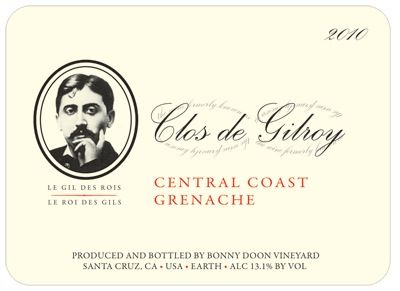 Barboursville Vineyards in Virginia started the year with a Gold and a Silver at the Winemaker Challenge in January, then ended it with a splash by winning four Gold awards and three Silver awards at the Sommelier Challenge. And another Virginia winery, Jefferson, won a Platinum, four Gold awards and three Silver awards spread over the four competitions. Jefferson's most impressive wine is a red Bordeaux-style blend, and its viognier can be stunning in good vintages. Barboursville Vineyards in Virginia started the year with a Gold and a Silver at the Winemaker Challenge in January, then ended it with a splash by winning four Gold awards and three Silver awards at the Sommelier Challenge. And another Virginia winery, Jefferson, won a Platinum, four Gold awards and three Silver awards spread over the four competitions. Jefferson's most impressive wine is a red Bordeaux-style blend, and its viognier can be stunning in good vintages.
Castello Banfi's Award-Winning Performances
SDIWC
Best Chianti
& Platinum 2008 Chianti Classico DOCG Italy $13
Silver 2009 Chianti DOCG Superiore Italy $11
Silver 2007 Chianti Classico DOCG Riserva Italy $18
Silver 2008 Centine Rosso, Toscana IGT Italy $11
Silver 2009 Centine Bianco, Toscana IGT Italy $11
Silver 2010 Rosa Regale, Brachetto d'Acqui DOCG Italy $23
Silver 2007 Belnero, Proprietor's Reserve, Toscana IGT Italy $39
Silver 2008 Rosso di Montalcino DOC Italy $19
Gold 2006 Brunello Di Montalcino DOCG Italy $60
Silver 2009 San Angelo, Pinot Grigio, Toscana IGT Italy $17
CRITICS CHALLENGE
Critics Silver 2008 Chianti Classico DOCG Italy $13
Critics Platinum 2007 Chianti Classico DOCG Riserva Italy $18
Critics Silver 2009 Centine Bianco, Toscana IGT Italy $11
Critics Gold 2009 Centine Rosè, Toscana IGT Italy $11.00
Critics Gold 2010 Rosa Regale, Brachetto d'Acqui DOCG Italy $23
Critics Gold 2009 Rosso di Montalcino DOC Italy $19
Critics Silver 2006 Brunello di Montalcino DOCG Italy $60
SOMMELIER CHALLENGE
Gold 2009 Chianti DOCG Superiore Italy $11
Silver 2008 Chianti Classico DOCG Italy $13
Gold 2007 Chianti Classico DOCG Riserva Italy $18
Gold 2008 Centine Rosso, Toscana IGT Italy $11
Gold 2007 Belnero, Proprietor's Reserve, Toscana IGT Italy $39
Silver 2009 Rosso di Montalcino DOC Italy $19
Gold 2006 Brunello Di Montalcino DOCG Italy $60
Gold 2009 Pinot Grigio, San Angelo, Toscano IGT $17
Follow Robert on Twitter at @wineguru.
Posted by Robert Whitley at 8:07 PM
|
|
January 4, 2012
WINERY OF THE YEAR:
Herdade do Esporão (Alentejo, Portugal)
Alentejo (sometimes called the Alentejo) lies south and east of Lisbon. A land of sun and wide, open spaces, it is sheep-grazing and olive-growing country, with a long history of local wine production, but few traditions ever thought worth exporting before now. All that has changed over the last two decades, with one producer in particular, Herdade do Esporão, leading the  way. Owned by Portuguese businessman José Roquette and directed by Australian winemaker David Baverstock, Esporão is producing exciting wines at all price levels, from the relatively simple Alandra and Monte Velho lines to the riveting Reservas and Private Selections. The company uses some international grape varieties, but concentrates far more on exploring the potential of Alentejo’s many native ones. That, ultimately, is what proves most exciting about the wines produced there today. They are very modern--Baverstock and his team having taken advantage of the latest research and technology--but they also are wonderfully distinctive. At a time when far too many of the world’s acclaimed wines taste far too alike, the reds and whites coming from Herdade do Esporão stood out for me in 2011 precisely because they refused to do so. I can’t say that they taste uniquely of Alentejo, but they most definitely taste true to themselves. And that’s plenty good enough for me. way. Owned by Portuguese businessman José Roquette and directed by Australian winemaker David Baverstock, Esporão is producing exciting wines at all price levels, from the relatively simple Alandra and Monte Velho lines to the riveting Reservas and Private Selections. The company uses some international grape varieties, but concentrates far more on exploring the potential of Alentejo’s many native ones. That, ultimately, is what proves most exciting about the wines produced there today. They are very modern--Baverstock and his team having taken advantage of the latest research and technology--but they also are wonderfully distinctive. At a time when far too many of the world’s acclaimed wines taste far too alike, the reds and whites coming from Herdade do Esporão stood out for me in 2011 precisely because they refused to do so. I can’t say that they taste uniquely of Alentejo, but they most definitely taste true to themselves. And that’s plenty good enough for me.
WINE OF THE YEAR
Nicolas Catena Zapata 2007 (Mendoza, Argentina)
I remain convinced that the finest wines from Argentina are Cabernet, not Malbec-based, and offer this enthralling example--the best current-release red I tasted in 2011--as evidence.  Made by the producer who, more than any other individual, inspired today’s Malbec boom, it is a blend of 70% Cabernet, 20% Malbec, and roughly 5% each of Cabernet Franc and Petit Verdot. Nicolas Catena’s flagship offering, it needs the firmer and more tannic Cabernet grape to provide structure, and consequently never seems soft or candied as many Malbec-dominated Argentineans (even quite expensive ones) do. Beautifully balanced, with unbelievably complex aromatics, it is a wine that will reward extended cellaring. And while hardly cheap ($120 a bottle), it seems a veritable bargain when compared to the sticker prices on today’s Bordeaux first growths or even cult Californians--wines that it definitely equals in quality. Made by the producer who, more than any other individual, inspired today’s Malbec boom, it is a blend of 70% Cabernet, 20% Malbec, and roughly 5% each of Cabernet Franc and Petit Verdot. Nicolas Catena’s flagship offering, it needs the firmer and more tannic Cabernet grape to provide structure, and consequently never seems soft or candied as many Malbec-dominated Argentineans (even quite expensive ones) do. Beautifully balanced, with unbelievably complex aromatics, it is a wine that will reward extended cellaring. And while hardly cheap ($120 a bottle), it seems a veritable bargain when compared to the sticker prices on today’s Bordeaux first growths or even cult Californians--wines that it definitely equals in quality.
Posted by Paul Lukacs at 11:00 AM
|
|
January 1, 2012
The Fabulous Five
Creators Syndicate
Choosing a wine of the year is not something I take lightly. Over the course of the past 12 months I have tasted thousands of new wine releases. Most of them do not meet the threshold of character and quality to be considered for such a unique place in my heart. That’s just the way it is. A wine of the year, anyone’s wine of the year, should be a wine that so engaged the taster that its flavors and structure remained seared in the taster’s memory long after the final sip.
Over my more than 20 years as a wine journalist, I have found the decision usually makes itself. One or two wines, occasionally three, tend to stand out, clearly head and shoulders above the rest. This year there are five, the Fabulous Five.
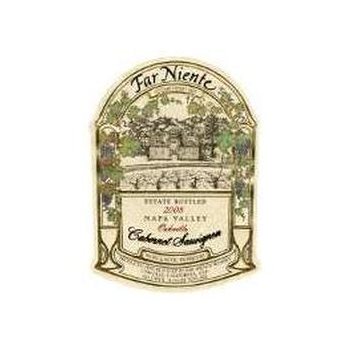 The Fab Five are the 2008 Quintessa Napa Valley Red Wine ($145), 2008 Far Niente Napa Valley Cabernet Sauvignon ($115), 2009 Freestone Quarter Moon Vineyard Pinot Noir ($75), 2007 Jordan Cabernet Sauvignon ($52) and Iron Horse “Joy” Blanc de Blancs ($100). The Fab Five are the 2008 Quintessa Napa Valley Red Wine ($145), 2008 Far Niente Napa Valley Cabernet Sauvignon ($115), 2009 Freestone Quarter Moon Vineyard Pinot Noir ($75), 2007 Jordan Cabernet Sauvignon ($52) and Iron Horse “Joy” Blanc de Blancs ($100).
There are a few things about my group of finalists that surprise even me. First, and perhaps most obvious, is the cost. None of the wines are what I would call a value wine. That said, if you consider Far Niente, Quintessa and Jordan to be in the same league with the very finest in classified-growth Bordeaux, then the prices don’t seem so daunting. If I had to choose between Chateau Cheval Blanc at $1200 a bottle or Far Niente at $115, I believe I would put my cash on the Far Niente.
The second characteristic that you may notice about my group of finalists is this: They are all produced in California, two in the Napa Valley and three in neighboring Sonoma County. That is very unusual for this confirmed “Old World” wine palate. If you put me in a raft and pushed me out to sea and I could only have one wine to take with me, it would be an Italian red, folks; probably a Barolo or a Brunello.
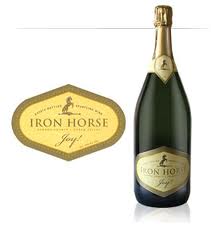 So that brings me to the most obvious question: why? Why is the Fabulous Five California-centric? The common thread between the five, for me, is that all five represent the finest wines I have ever tasted from these producers. Each wine is an impressive accomplishment from an accomplished producer. Each wine is a triumph unto itself. So that brings me to the most obvious question: why? Why is the Fabulous Five California-centric? The common thread between the five, for me, is that all five represent the finest wines I have ever tasted from these producers. Each wine is an impressive accomplishment from an accomplished producer. Each wine is a triumph unto itself.
I remember tasting the Far Niente. I was working side by side with my top assistant, Rich Cook, as we made our way through a large flight of red-wine samples. We generally work at a different pace and almost never taste the same wine at the same time.
On this day I tasted a gorgeous Cabernet and my head snapped back as if on a string. I turned to Rich, who was having a similar reaction, and we both pointed at the same bottle and uttered in unison: “Oh my God!” It was the 2008 Far Niente Cab. I probably don’t need to explain that Far Niente has been making remarkable Cabernet Sauvignon for about three decades, but I can certainly tell you this is the best one I’ve ever tasted, and I’ve had just about all of them.
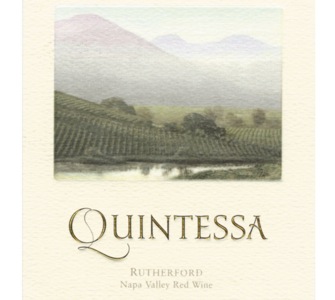 At yet another samples tasting I hit upon the voluptuous 2008 Quintessa, which is about as sensual as a red wine could ever be, and I thought I must have tasted my wine of the year then and there. As we often do, I invited friends to stop by the office and snag some of the leftover wines from the day of tasting. I pushed everyone in the direction of the Quintessa and they were more than happy to imbibe. At yet another samples tasting I hit upon the voluptuous 2008 Quintessa, which is about as sensual as a red wine could ever be, and I thought I must have tasted my wine of the year then and there. As we often do, I invited friends to stop by the office and snag some of the leftover wines from the day of tasting. I pushed everyone in the direction of the Quintessa and they were more than happy to imbibe.
Eventually the Quintessa was gone and we stood around staring at each other in wonder, all thinking the same thing: How do we top that? As it happened, I had a bottle of the 2007 Jordan Cabernet Sauvignon from Alexander Valley in my computer bag, a bottle that was left over from the Critics Challenge International Wine Competition, where it won a gold medal.
I opened it and shared with the assembled crowd. I’ve been a fan of Jordan Cab since the very first vintage I tasted, which I believe was the 1978. In all of those years I had not tasted a Jordan Cab that was so profound right out of the bottle. It stood out right alongside the brilliant 2008 Quintessa. I was stunned.
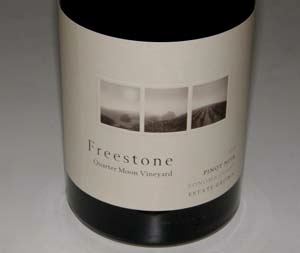 My reaction to Freestone’s 2009 Quarter Moon Vineyard Pinot Noir was similar, though for different reasons. I had been under the strong impression that this new winery in the Sonoma Coast appellation would ultimately become renowned for its striking Chardonnays. Outstanding Pinot Noir from California is becoming rather common. Outstanding Chardonnay is rare, so the very best tend to stand out and make their mark more easily and quickly. My reaction to Freestone’s 2009 Quarter Moon Vineyard Pinot Noir was similar, though for different reasons. I had been under the strong impression that this new winery in the Sonoma Coast appellation would ultimately become renowned for its striking Chardonnays. Outstanding Pinot Noir from California is becoming rather common. Outstanding Chardonnay is rare, so the very best tend to stand out and make their mark more easily and quickly.
Freestone’s Quarter Moon Vineyard Pinot, however, is a wine that speaks to a specific place, with its own unique personality. The ’09 exhibits structure, flavor intensity, and a white pepper spice note that is both unique and compelling. It will give the Freestone Chardonnays a run for their money.
And finally, near the end of this very good year in California wine, I tasted a sparkling wine from the Green Valley of the Russian River Valley that should put Champagne on notice that it doesn’t own the patent on exceptional bubbly.
That would be Iron Horse’s “Joy,” which is a multi-vintage blanc de blancs cuvee that is typically aged on the lees 10 to 15 years prior to disgorgement. It is only sold in magnum, so at $100 retail that comes out to $50 per 750ml, and worth every penny.
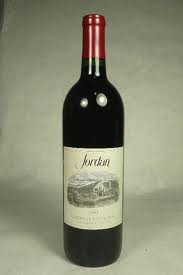 It is rich, creamy and toasty, beautifully structured, and exhibits exceptional length, very much after the fashion of a tetes de cuvee from a top Champagne house. The “Joy” cuvee I tasted was bottled in 1997 and disgorged in July of this year. It is not only the finest sparkling wine I’ve tasted from Iron Horse, it’s the finest California sparkling wine I’ve ever tasted. Period. It is rich, creamy and toasty, beautifully structured, and exhibits exceptional length, very much after the fashion of a tetes de cuvee from a top Champagne house. The “Joy” cuvee I tasted was bottled in 1997 and disgorged in July of this year. It is not only the finest sparkling wine I’ve tasted from Iron Horse, it’s the finest California sparkling wine I’ve ever tasted. Period.
These are my memories. And memories are what a wine of the year is made of.
Now, the envelope please. My 2011 wine of the year, after careful deliberation, is the 2008 Far Niente Cabernet Sauvignon, which is sourced primarily from the Martin Stelling Vineyard in Oakville, in the sweet spot of the Napa Valley.
Follow Robert on Twitter at @wineguru.
Posted by Robert Whitley at 11:56 AM
|
|
 |
|